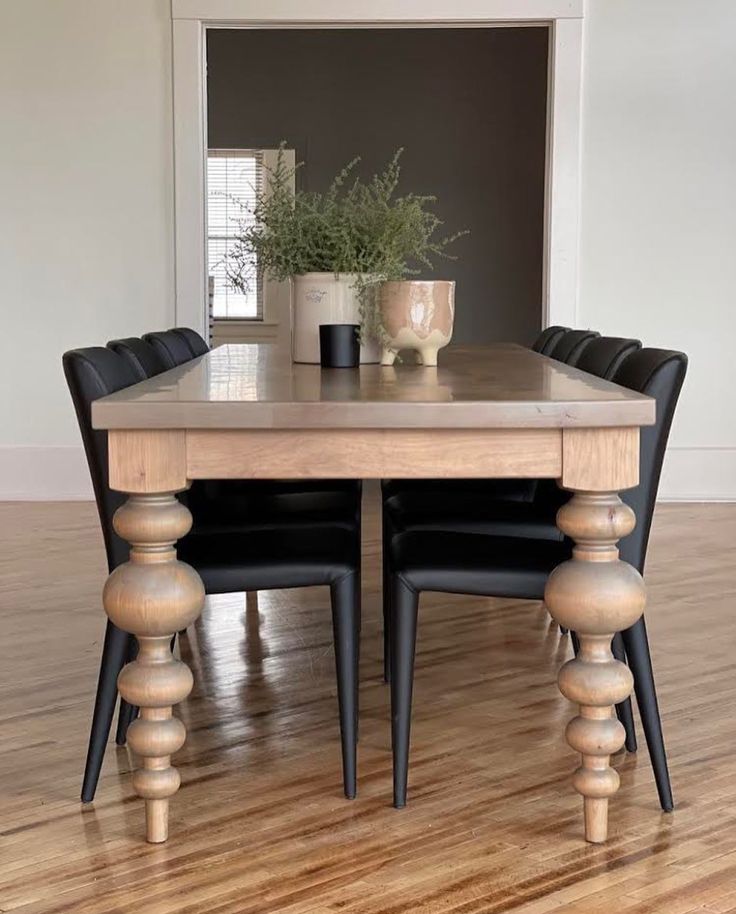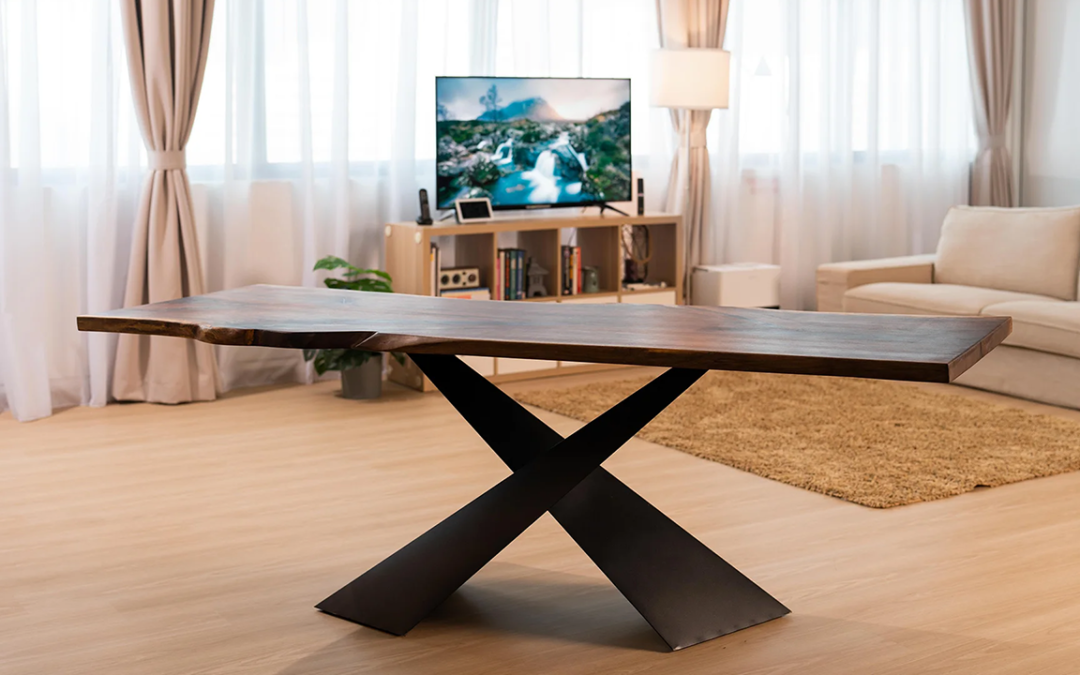Upgrade Your Furniture with Custom Dining Room Table Legs
Upgrade Your Furniture with Custom Dining Room Table Legs
Blog Article
From Conventional to Modern: Discover the Suitable Dining-room Table Legs for Your Style
The selection of dining-room table legs plays an essential function in defining the total character of your area, connecting the space in between typical craftsmanship and modern-day looks. While traditional designs such as cabriole and turned legs evoke a sense of classic sophistication, modern styles like barrette and geometric options present a chance for striking visual rate of interest. Reviewing the best balance between these styles requires a nuanced understanding of your existing décor and personal taste. As you think about these aspects, the question remains: just how can you seamlessly integrate these diverse leg styles to create a harmonious eating experience?
Comprehending Table Leg Styles
The selection of dining room table leg designs can dramatically affect both the visual appeals and functionality of the area. Each leg design contributes one-of-a-kind sensible attributes and visual elements, providing to varied style choices and usage needs. Recognizing these designs is vital for picking the ideal table that lines up with your general interior decoration vision.
For circumstances, conical legs use a tidy, traditional appearance that can boost a space's beauty, while pedestal bases supply stability and optimize legroom, making them optimal for smaller rooms. Hairpin legs, a trademark of mid-century modern-day layout, present a commercial panache, enabling for a ventilated, open feeling. Trestle legs evoke rustic appeal, giving durable support and a sense of timelessness.
Moreover, the option of products plays a significant role. Wooden legs can bring warmth and appearance, whereas metal options typically communicate a sleek, contemporary ambiance. Eventually, understanding table leg styles is vital for creating a cohesive eating area that reflects individual style while ensuring practicality and comfort. By attentively thinking about these components, you can improve both the functional and aesthetic appeal of your eating space.
Typical Table Leg Options
When choosing dining-room table legs, traditional options commonly symbolize classic beauty and workmanship. These layouts mirror an abundant heritage and a dedication to high quality, making them suitable for those that appreciate traditional looks.
Among one of the most iconic conventional leg designs is the cabriole leg, identified by its graceful bent form. This design commonly includes attractive carvings and is most frequently located in Queen Anne and Chippendale furnishings. An additional popular alternative is the transformed leg, which boasts a series of smooth, rounded forms that give a timeless look while maintaining security.
Moreover, the straight leg, while simple, offers a tough and basic framework that can mix perfectly with a range of tabletop styles. For those drawn to ornate outlining, claw-and-ball feet legs stimulate a sense of majesty and can function as a sensational centerpiece in any type of dining space.
Last but not least, pedestal bases, although not purely legs, supply an alternative typical alternative that permits sufficient legroom and can be wonderfully sculpted. Each of these conventional leg styles adds to the total atmosphere of a dining-room, weding function with visual charm.

Modern Table Leg Layouts
Modern table leg designs offer a diverse range of styles that highlight tidy wikipedia reference lines and innovative products. These designs usually prioritize functionality while functioning as striking focal points within a dining space. Minimalist aesthetic appeals prevail, with legs crafted from materials such as metal, glass, and crafted wood, which contribute to a modern and airy feel.
One preferred layout is the barrette leg, defined by its slender, tapered framework that provides stability without overwhelming the tabletop (dining room table legs). This style is commonly discovered in mid-century contemporary furnishings and can easily match numerous table forms. One more pattern is using geometric shapes, where legs may take on angular or unbalanced types, including visual rate of interest and a touch of artistry

Mixing Styles for Distinct Rooms
Frequently, property owners look for to create distinct dining areas that show their individual style by mixing numerous layout elements. This approach enables the incorporation of varied aesthetic appeals, leading to an unified yet distinctive atmosphere. As an example, combining a rustic wood table with sleek, modern steel legs can produce an appealing comparison that raises the room's general allure.
Furthermore, incorporating vintage table legs with contemporary table tops can stimulate a sense of background while maintaining a modern-day sensibility. Such combinations not just showcase specific preference but likewise urge creative thinking, enabling house owners to curate a room that really feels both personal and welcoming.
Shade plays an essential role in this mixing procedure; picking table legs that match or contrast with the existing shade plan can boost aesthetic interest. Whitewashed legs can soften the daring of a dark table surface, developing a well balanced aesthetic.
Tips for Selecting the Right Legs
Choosing the right table legs is vital for accomplishing both capability and visual appeal in your eating room. Begin by click here now taking into consideration the general style of your area. Conventional setups gain from legs that feature elaborate makings or transformed layouts, while contemporary areas may call for streamlined, minimalist designs.
Next, evaluate the height and security of the legs. dining room table legs. Conventional dining tables range between 28 to 30 inches in elevation, so ensure the legs complement this measurement for convenience. Furthermore, robust products, such as wood or metal, can boost stability and long life
Assess the leg form too-- alternatives consist of straight, tapered, or stand designs. Straight legs supply a timeless appearance, while tapered legs site web can add a touch of beauty. Pedestal bases provide adequate legroom and are excellent for smaller sized areas.
Conclusion
In recap, choosing the optimal dining-room table legs calls for cautious factor to consider of both typical and modern designs. Traditional alternatives such as cabriole and transformed legs provide timeless sophistication, while modern-day styles like barrette and geometric forms offer a modern touch. By balancing leg style, height, and material with the general decor, a natural and inviting atmosphere can be attained. Eventually, the picked table legs ought to mirror the preferred aesthetic, enhancing the dining experience within the area.
The range of eating area table leg styles can dramatically affect both the aesthetics and performance of the area. Ultimately, understanding table leg styles is important for developing a natural dining location that shows individual design while making certain functionality and comfort.One of the most legendary typical leg designs is the cabriole leg, characterized by its elegant curved form. Straight legs offer a timeless look, while conical legs can add a touch of style.In recap, picking the excellent dining area table legs needs careful factor to consider of both modern-day and conventional styles.
Report this page